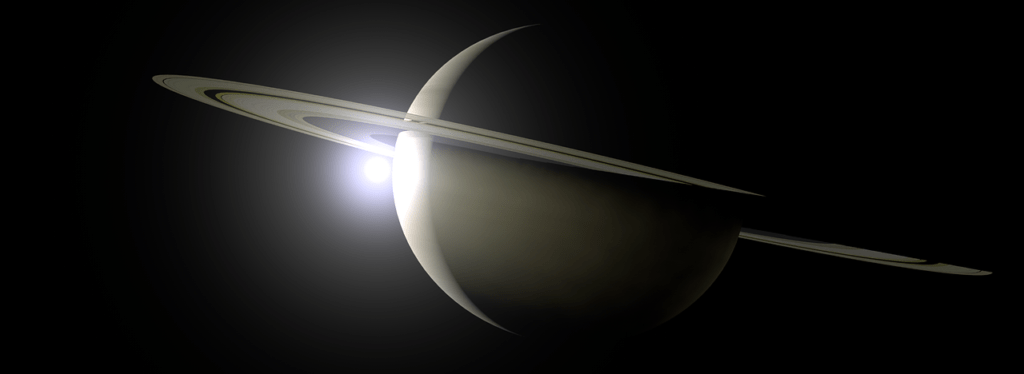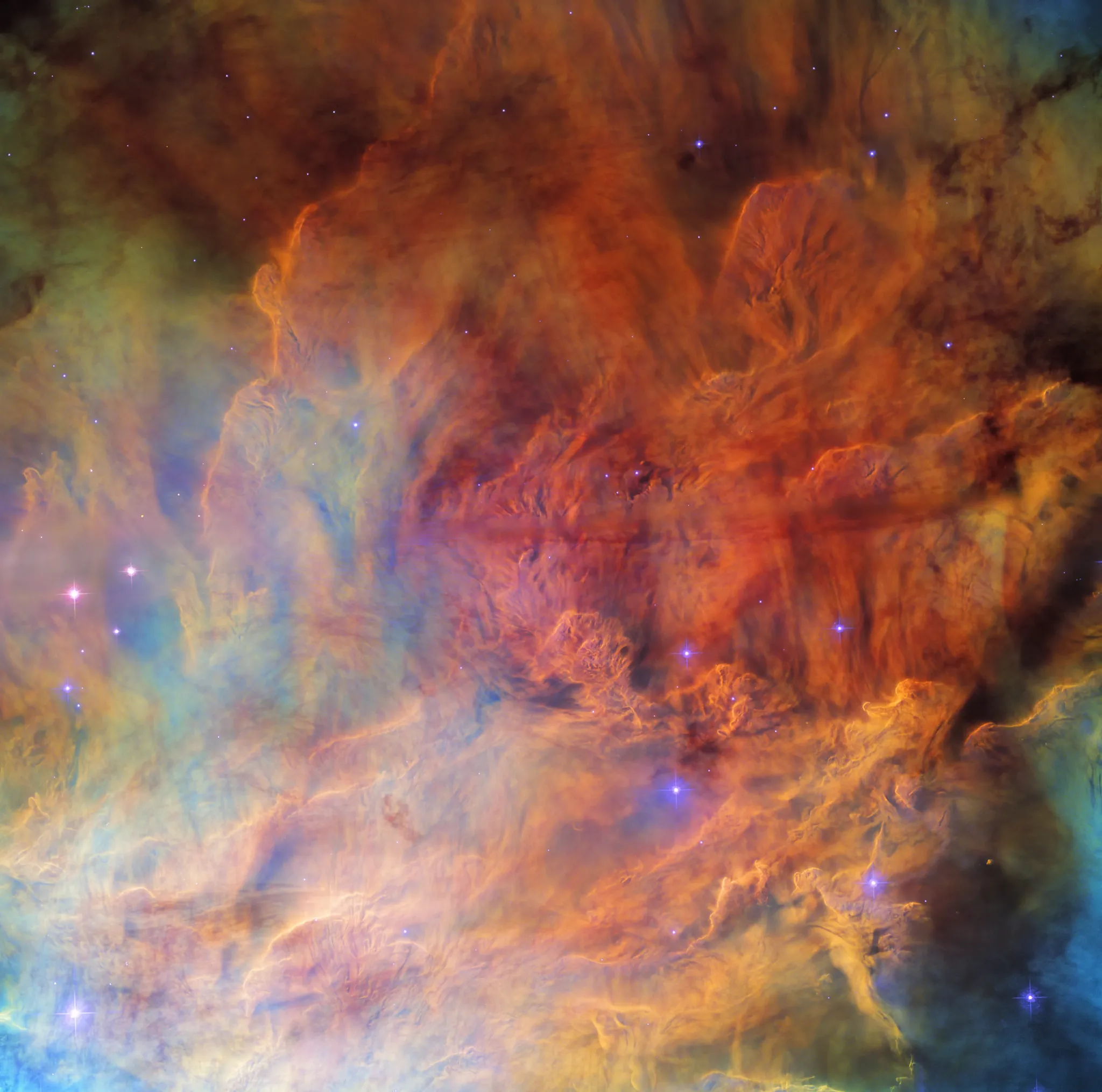
Introduction
Gazing towards the heart of the Sagittarius constellation, our eyes might fall upon a faint, fuzzy patch amidst the starry canvas. This seemingly wispy cloud, known as the Lagoon Nebula, harbors a dynamic reality – a cosmic nursery where stars are born in spectacular fashion. Its journey as a recognized celestial object began centuries ago, and its intricate tapestry holds captivating secrets about stellar formation and evolution.
The Lagoon Nebula general information
A Historical Name
The first documented observation of the Lagoon Nebula traces back to Giovanni Battista Hodierna, an Italian astronomer, before 1654. However, it gained widespread recognition thanks to the meticulous work of Charles Messier, a French comet hunter. In 1764, Messier catalogued this nebulous object as the eighth entry in his famous list, earning it the designation Messier 8 (M8).
Another commonly used name is NGC 6523, bestowed by the New General Catalogue, a comprehensive compilation of deep-sky objects published in the 19th century. But perhaps the most evocative name is the Lagoon Nebula, reflecting its resemblance to a shimmering lagoon teeming with celestial life.
Location of The Lagoon Nebula
Located approximately 4,000 to 6,000 light-years away from Earth, the Lagoon Nebula stretches across a vast expanse of 110 light-years by 50 light-years. This colossal cloud of gas and dust serves as a vibrant incubator for young stars, making it a prime target for scientific exploration.
Basic characteristics
The nebula’s composition primarily consists of hydrogen gas, accounting for roughly 90% of its mass. Interspersed within this hydrogen sea are traces of other elements like helium, oxygen, and nitrogen, along with intricate dust grains composed of silicates, carbon, and ice. This interstellar dust plays a crucial role in shielding newborn stars from their own intense radiation and providing the raw materials for future planetary systems.
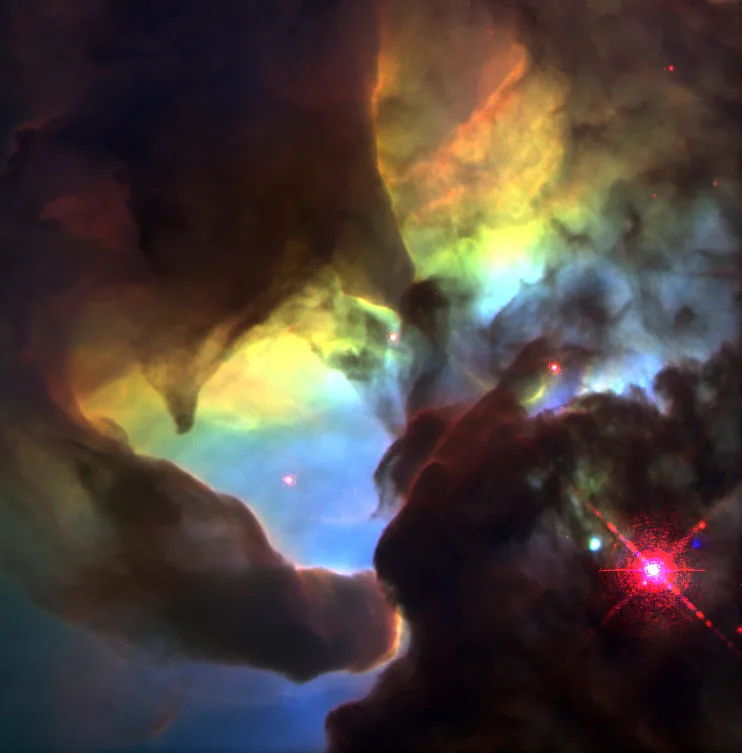
A. Caulet (ST-ECF, ESA) and NASA
Physical Properties of The Lagoon Nebula
Glowing Embers
The Lagoon Nebula shines not through reflected light, but through its own internal glow. This luminescence stems from the presence of hot, young stars within the nebula. Their energetic radiation excites surrounding hydrogen atoms, causing them to emit visible light, painting the nebula in hues of red, pink, and blue. This classification as an emission nebula and specifically an H II region, highlighting the abundance of ionized hydrogen, reveals the nebula’s active role in stellar birth.
Stellar Fireworks
Deep within the Lagoon Nebula lies a bustling stellar nursery – the open cluster NGC 6530. This dense grouping of young stars, estimated to be only a few million years old, is responsible for much of the nebula’s glow. Within the cluster, stars exist in various stages of development, from massive blue giants radiating intense heat to fledgling, red-hued protostars still shrouded in dust cocoons. Observing these diverse stellar stages allows astronomers to piece together the intricate puzzle of stellar evolution.
Cosmic Sculptures
Not only is the Lagoon Nebula a stellar breeding ground, but it also boasts captivating sculptures carved from its dusty depths. Towering pillars of gas and dust, reminiscent of celestial fingers pointing towards the heavens, are sculpted by the intense radiation from nearby stars. Additionally, wispy filaments and dense globules weave through the nebula, providing insights into the dynamic interplay between gas, dust, and nascent stars. These interstellar structures not only add breathtaking beauty to the nebula but also hold valuable clues about the early stages of star formation.
Our exploration of the Lagoon Nebula has just begun. In the next part, we will delve deeper into the ongoing research, significant discoveries, and the nebula’s future, uncovering even more secrets about this fascinating stellar cradle.
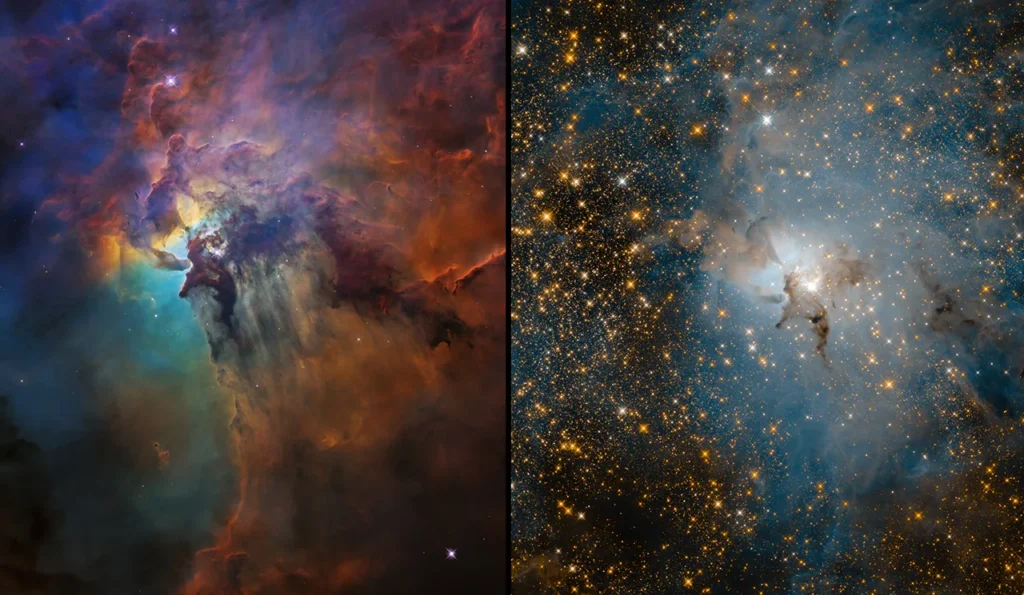
NASA, ESA and STScI
Scientific Significance
The Lagoon Nebula’s captivating beauty isn’t merely an aesthetic spectacle. It serves as a crucial laboratory for astronomers, offering invaluable insights into various branches of astrophysics.
Stellar Evolution Unveiled
Within the nebula’s heart lies a treasure trove of stars in diverse stages of life. From colossal blue giants nearing their fiery demise to infant protostars still swaddled in dust, the Lagoon Nebula presents a snapshot of stellar evolution in action. By studying the properties and interactions between these stars, astronomers can refine our understanding of stellar lifecycles, including their formation, burning phases, and eventual explosions as supernovae. The diverse stellar population within the Lagoon Nebula allows scientists to test theoretical models and uncover the mechanisms governing the birth, life, and death of stars.
Unraveling Cluster Formation
Nestled within the Lagoon Nebula lies NGC 6530, a vibrant open star cluster. Studying this cluster provides crucial clues about how such groupings form. The presence of massive stars within the cluster suggests that their intense radiation and winds might have triggered the collapse of surrounding gas clouds, leading to the birth of numerous stars in close proximity. By analyzing the distribution, ages, and masses of stars within NGC 6530, astronomers can refine theories about the formation and evolution of open clusters, shedding light on how stars like our own Sun might have been born.
Chemical Enrichment Symphony
As massive stars within the Lagoon Nebula reach their explosive ends, they forge heavier elements like oxygen, carbon, and iron in their fiery cores. These elements are then ejected into the interstellar medium through supernovae, enriching the material available for future generations of stars and planets. By studying the abundance of different elements within the nebula, astronomers can map the history of stellar explosions and trace the chemical evolution of the galaxy. The Lagoon Nebula thus serves as a crucial piece in understanding the galactic ecosystem and the intricate processes that led to the formation of life-sustaining elements like those found on Earth.
Peering into the Future
The quest to unravel the Lagoon Nebula’s secrets continues. Powerful telescopes like Hubble and the upcoming James Webb Space Telescope (JWST) offer unprecedented capabilities for studying the nebula in even greater detail. Hubble’s sharp vision has already revealed intricate dust structures and hidden populations of young stars, while JWST’s infrared capabilities promise to pierce through dust veils and uncover even fainter stellar objects. These future observations will likely lead to groundbreaking discoveries about the nebula’s formation, stellar populations, and potential protoplanetary disks, furthering our understanding of star and planet formation processes.
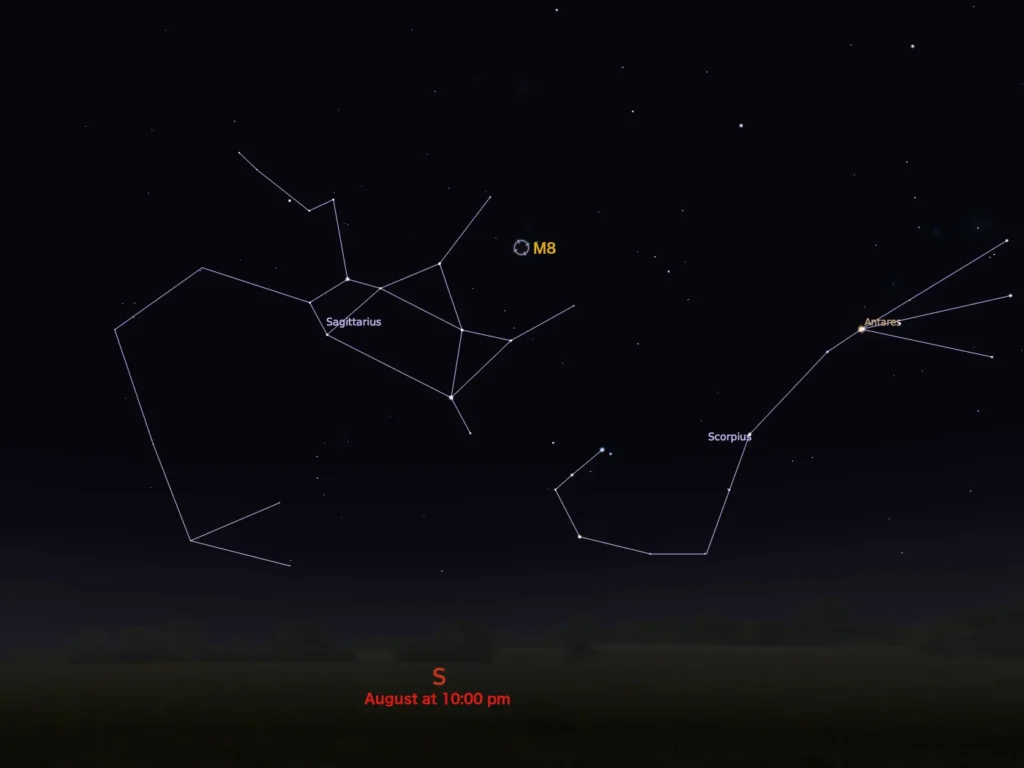
Image courtesy of Stellarium
Beyond The Lagoon Nebula
While the Lagoon Nebula holds its own unique characteristics, comparing it to other star-forming regions like the Orion Nebula or Carina Nebula provides valuable insights. Similarities in their dusty pillars, stellar populations, and ongoing star formation processes suggest universal mechanisms at play. However, each nebula also boasts unique features, like the Carina Nebula’s massive stars and complex dust structures, highlighting the diversity of star-forming environments across the galaxy. Studying these different regions allows astronomers to paint a more complete picture of stellar birth and evolution.
Cultural influencer
The Lagoon Nebula’s captivating beauty hasn’t gone unnoticed by artists and writers. It has found its way into paintings, photographs, and even science fiction literature, inspiring awe and wonder. This cultural impact highlights the nebula’s role in sparking human curiosity and igniting our passion for exploring the universe.
How can I help?
Even amateur astronomers can contribute to the scientific exploration of the Lagoon Nebula. Citizen science projects offer opportunities to analyze astronomical data, classify stellar objects, and help identify new features within the nebula. By participating in these projects, anyone can become part of the ongoing quest to unravel the mysteries of this celestial jewel.
Conclusion
The Lagoon Nebula, far from being merely a pretty face, is a dynamic tapestry woven with stellar birth, death, and the ongoing chemical evolution of the galaxy. It serves as a valuable laboratory for astronomers, offering insights into stellar evolution, cluster formation, and the intricate dance of life and death within the cosmos. As we continue to explore this celestial marvel, both with cutting-edge technology and the collective curiosity of citizen scientists, the secrets it holds promise to further inspire and illuminate our understanding of the universe and our place within it.
You may also like
Mercury: The Closest Planet to the Sun
Venus: The Earth’s Twin or a Very Different Planet?
Mars: Comprehensive Exploration, unveiling the Mysteries
Jupiter: A Cosmic Giant – Symphony of Storms
Saturn: A Gaseous Giant with Enthralling Rings and Diverse Moons
Useful links:
NASA:
ESA:
https://www.esa.int/Science_Exploration/Space_Science/Exploring_space/Lagoon_Nebula_NGC_6523_or_M8

